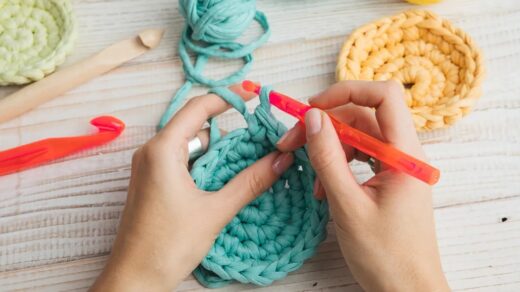Breast milk is the best food for your baby and the only food that can supply specific nutrients needed for growth and development. Breastfeeding can provide many health benefits for both mother and child, as well as a great deal of pleasure. For new mothers, breast milk supply may need support to ensure sufficient milk production to meet the baby’s nutritional needs.
There are several breast pumps available in the market today. Some of them are manual breast pumps, electric breast pumps, double electric breast pumps, nipple-only breast pumps, pump accessories, etc. This blog will help you understand types of manual breast pump and how to use them for milk suction or pumping milk for feeding an infant. It will also cover the best breast pump for breastfeeding mothers along with tips and tricks to get the most out of it. Read on to find out all that you need to know about breast pumping.
Types of breast pumps
– Manual pumps: These pumps are operated by a person using their hands. A manual pump is a hands-free pumping system, which uses the suction of a pump to milk from the breast. This type of breast pump is easy to use and can be used for both breast milk pumping and breastfeeding.
– Electric pumps: These pumps are powered by batteries and can be used with either hands-free or hand-operated modes. They help provide breast milk for breastfeeding babies without requiring any assistance from a person.
– Pumps with both manual and electric motors: This type of pump has both manual and electric motors, which allows the user to choose the mode of operation they prefer. Single-stage pumps only have one motor, which is used to extract milk from the breast. Double-stage pumps have two motors, which work in tandem to extract milk more efficiently.
– breastfeeding bra/sling: This type of bra or sling helps breastfeeding mothers pump breast milk easily while they’re sitting or lying down. It provides support while breastfeeding and helps reduce nipple soreness, rashes, and mastitis.
– breast shield/milk bag: This accessory is used when pumping breast milk manually. It contains breast milk inside a sterile container that is attached to the breastfeeding bra or sling. When it’s time to pump, moms can remove the shield and collect breast milk directly into the feeding bowl of a nipple pump or bottle
Overall, there are many options for breastfeeding mothers when it comes to pumping breast milk at home. The choice depends on individual preferences, budget, accessibility, and overall satisfaction with the chosen option
How to use a breast pump
– Breast pumping is a great way to relieve stress and increase your milk supply. It can be done at any time of day or night, and there are several types of pumps available, so find the one that is best suited for you.
– You can use a breast pump with or without a baby; it’s up to you. Some breast pumps can be used hands-free, while others require you to hold a handle or pump manually.
– Some breast pumps come with accessories, such as breast shields and accessories, cleaning supplies, and replacement parts. Others may come with a manual, but you may also need to search for accessories online or in stores.
– When choosing a breast pump, consider factors such as price, size, features, and ease of use. You may also want to consider whether the pump has parts made of medical-grade plastic or premium materials designed to last longer and be easier to clean.
Best breast pumps for breastfeeding mothers
– Pumping breast milk is one of the most important things a mother can do for her infant. Breast milk provides essential nutrients and antibodies that help an infant develop and grow. It’s also a good source of energy and fat, which can help provide extra calories for breastfeeding infants.
– There are various types of breast pumps on the market, and each has its own benefits and drawbacks. Some breast pumps are hands-free, which makes pumping easier and more comfortable. Others are electric-powered, which require less manual effort and can pump breast milk faster.
– It’s important to find a breast pump that is comfortable to use, easy to clean, and affordable. When selecting a breast pump, consider factors such as the type of milk you’re pumping (whether it’s breast milk or another type of milk), the pumping speed (how fast you pump), the suction strength (the amount of force used during pumping), the size of the breast shield (used during pumping to protect the nipple), and any accessories included with the purchase (such as breast shields or pumping bras). Also, be sure to get advice from a health professional before beginning to pump breast milk.
What to do if your breasts become full while pumping
If your breasts become full while pumping, it can be an embarrassing and frustrating experience. However, there are some simple tips you can follow to avoid breast engorgement or leakage during pumping sessions.
– If your breast becomes full, try emptying them frequently using a breast pump or hands.
– Fill the breast pump with cold water before each use to reduce the chance of nipple irritation.
– Try different positions while pumping to relieve breast engorgation. For example, pump in a sitting position or standing up after lying down.
– If you cannot empty your breasts, use a supplemental nursing system instead of hands-free pumping. It will provide suction and let your breast milk flow freely without you having to worry about breastfeeding difficulties.
– Avoid washing your breast too often as this may lead to breast engorgement. Besides, washing also causes nipple irritation that can make breastfeeding difficult for you and your baby.
– Always wear a bra when breastfeeding and keep spare items handy in case of nipple irritation or leakage.
Additionally, if hands-free pumping does not work for you, consider switching to hands-on pumping in which you manually pump your breast milk into a feeding bowl or other device for feeding your baby .
What are the benefits of using a breast pump?
The benefits of using a breast pump include:
1. breastfeeding is the best way to feed your baby and breast milk is the perfect food for babies.
2. A breast pump can help you increase your milk production. This means that you will produce more milk than you would if breastfeeding alone.
3. A breast pump can also reduce the amount of time you need to spend breastfeeding. You will be able to pump milk at a faster rate and will have less time spent nursing each day.
4. breast pumps may be used in tandem with breastfeeding. This means that you will use your breast pump during the breastfeeding session and then continue to pump afterwards so that you can resume breastfeeding as soon as possible.
What are the best ways to breastfeed and pump?
It is up to you and your baby to find the best ways of breastfeeding and pumping. Some people breastfeed exclusively, while others pump milk in order to supply their baby with breast milk. There are a variety of ways to breastfeed and pump, so it is important to find something that will work best for you and your baby.
Some things to keep in mind when breastfeeding and pumping include: finding a comfortable way of breastfeeding and pumping, pumping enough milk to meet your baby’s needs, keeping track of how much milk you’re pumping, and storing pumped milk in a safe place.
What are the health risks associated with breastfeeding and pumping?
There are a few potential health risks associated with breastfeeding and pumping. The most common health risks associated with breastfeeding are mastitis (a breast infection), clogged milk ducts, and postpartum depression. Pumping can also cause stress on the pump and breast tissue, which can lead to mastitis and other problems.
It is important to speak with your doctor about the health risks of breastfeeding and pumping before beginning either mode of nursing. Together, you can weigh the pros and cons of both modes of nursing and decide what is best for you and your baby.
Conclusion
Breast milk is a wonderful source of nutrition for your baby. If pumping isn’t working for you, there are several other things you can do to get the breast milk flowing naturally. Try massaging and exercising your breasts, as well as using breast pump accessories and breast milk storage bags. Besides, it’s best to pump at regular intervals throughout the day. If nothing works, talk to a lactation consultant who can help you out!


